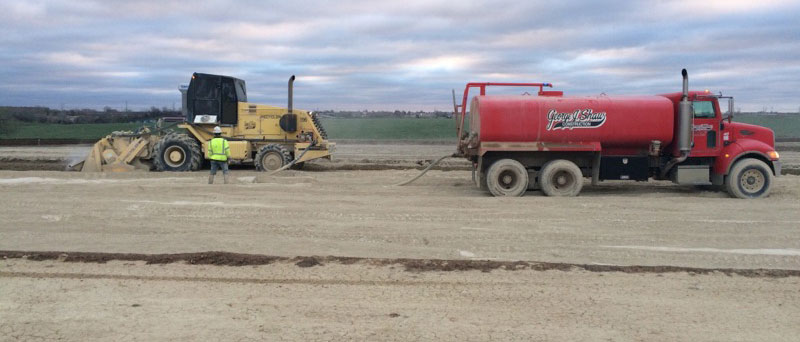
The future beneficial use of fly ash seems to be ‘up in the air.’ Recent USEPA air pollution control regulations are resulting in the production of fly ash with uncertain chemical properties, typically additional carbon and heavy metals content. These properties may restrict or possibly prohibit the use of some historically available fly ash sources for use in concrete or for soil stabilization/modification.
The spotlight on fly ash is due to operational and equipment modifications at coal-fired power plants to meet new air pollution control regulations. Changes include the introduction of powdered activated carbon (PAC) into the flue gas upstream of particle control devices to reduce the expulsion of heavy metals into the air. Fly ash with higher heavy metal and carbon content is expected.
Fly Ash and Concrete
The use of fly ash to produce a more durable and stronger concrete is a well-established practice. Historically, fly ash included a small percentage of unburned carbon. Carbon can adversely interact with the concrete surfactants used to induce air entrainment. Consequently, current practice limits the percentage of carbon in fly ash designated for use in concrete. The concrete industry recognized this adverse effect and is developing processes to use high carbon content fly ash in concrete.

Fly Ash and Soil Improvement
Fly ash is frequently used to reduce the swell potential of highly plastic soils, increase the workability of wet soils, and increase the strength of pavement subgrades. The increased heavy metal content in some fly ash sources is resulting in some States (such as Missouri) reviewing a maximum amount of fly ash that can be used in unencapsulated beneficial reuse without receiving prior authorization or demonstration that adverse effects to human health and the environment would not occur.
Geotechnology continues to monitor these technical and regulatory changes on behalf of our clients. During this transition, our engineers communicate with regulators, the fly ash brokers, and review the fly ash chemical analysis reports to provide sound recommendations based on the available information.
It is important to know that individual states may have more restrictive requirements or permitting but to learn more follow the link below.
For more information, please contact Matt McQuality, P.E. or Anna Saindon, Ph.D., P.E., R.G.
